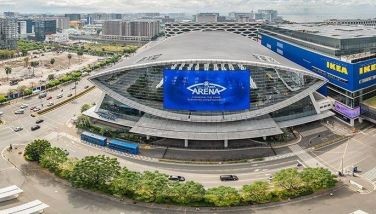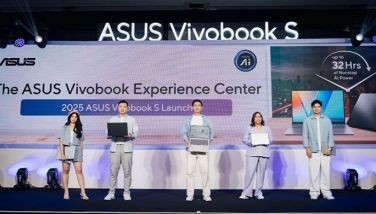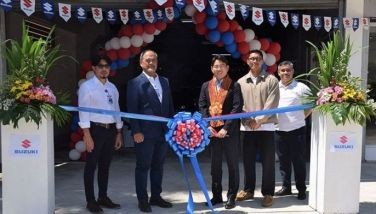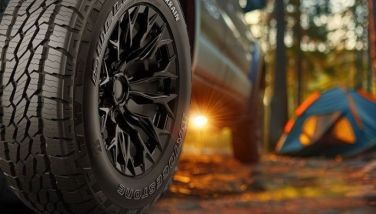The new “VTEC”
My generation of motoring enthusiasts grew up in what was arguably an exciting period for the industry. In the 80s and 90s, the usual engine design was of four cylinders, carbureted, and with overhead valves. The early 90s saw the introduction of 4-valves per cylinder (the famed “16 valves” popularized by the Toyota Corolla), electronic fuel injection, and “VTEC”. At a time when the average 1.6-liter engine had peak output ranging from 110-120 HP, Honda’s Variable Valve Timing and Lift Electronic Control technology found a way to develop more power out of a relatively small displacement.
Without getting too technical, the addition of a second cam lobe and some tricks with the valves (such as higher lift) enabled an engine to have a Jekyll n’ Hyde personality. In traffic or below a low engine range like 3,000 rpm, it was biased towards torque and fuel economy. At higher engine speeds, the camshaft(s) switched to the second cam lobe, enabling more fuel and air to enter the cylinders and thus produce more power. By the mid-90s, it was the “in” thing among most buyers to have VTEC.
If I remember correctly, the first introduction of CRDi to the Philippine market was with the Isuzu Trooper in the late 90s. The combination of a direct injection head (which minimized power loss relative to a conventional head) and a very high pressure injector system maximized the energy potential of diesel, such that a CRDi Trooper produced around 30 more HP from the same displacement than a non-CRDi Trooper. The improvement was immediately obvious. After getting used to the slowly-“but-surely” accelerative character of diesel engines, the CRDi ran like a scalded cat. Suddenly I could pass trucks and buses on the highway just as if I were in a car, and the low-end torque inherent in diesel made overtaking much less exciting: you just step on the go-pedal and off you go.
CRDi technology took a while to reach the general population as fuel issues needed to be resolved. Apparently, our fuel (both gas and diesel) has a lower quality than in developed countries, and the local diesel tended to give problems to the highly sensitive injector systems of CRDi engines. Gradually, these issues were resolved by manufacturers (probably by de-tuning their engines somewhat), so today you can opt for CRDi whether it’s a high-rolling BMW X5 or a daily driver SUV like the Hyundai Tucson. What’s more, not only is CRDi a viable option, it’s also quite a desirable one too. Given the rising price of fuel (a check at the local Shell station showed prices of P45.85 for V-Power, P44.41 for premium, P43.97 for unleaded, and P37.87 for diesel as of press time), buyers that drive a lot must be seriously crunching the numbers to decide which engine type will cost more in the long run.
Diesel engines, of course, tend to cost more in the short-term. For example, a gas-type Chevrolet Captiva retails for P1.399M versus P1.499M for the CRDi variant (I’m quoting from C! Magazine’s Buyer’s Guide). Similarly, a gas-type Hyundai Tucson 4x2 (A/T) retails for P948k versus P1.078M for the CRDi 4x2 (A/T). A difference of P100-130k is nothing to sneeze at. Even with the minimum P6.1 difference in unleaded versus diesel, and the approximate 2-3 km advantage of diesel over gas when it comes to getting more mileage out of a given quantity of fuel, it will take a while before you begin to get some real savings out of your investment.
Or will it really? Without even computing the additional mileage of diesel over gas yet, let’s say we consume 50 liters a week; that’s 2,400 liters a year. Go for gas and you’ll pay P105,528 in a year at current fuel prices. Go for diesel and you’ll spend P90,888; a difference of P14,640. If you plan to keep a car for just 5 years, you “save” P73,200 versus gas but still lose P26,800 if you’d paid a P100k premium for a CRDi. But if you plan to keep for a longer period of time, say 10 years, you save P146,400 in fuel costs and P46,400 from that P100k premium. Now it makes more sense. Keep it even longer and you’ll theoretically be saving even more, even with marginally higher maintenance costs for diesel such as oil filters. And because diesel engines tend to be more robust by necessity because of their high-compression nature, keeping a diesel-equipped vehicle for more than 10 years doesn’t seem like a big deal… unless we’re considering emissions regulations, but we’ll save that for another topic.
Right now, some CRDi options seem very attractive and some just don’t. Buyers looking to keep an SUV, MPV or pickup truck and offered a choice of gas or diesel drivetrains can do the numbers and see real long-term savings. But passenger car buyers might not see any real advantage. The Ford Focus with the CRDi engine has a P90k premium over the 2.0-liter gas variant. Not even discounting the handicap of not having an available automatic transmission (for now) for a perennially gridlocked market, I don’t know how many savings-conscious people would want to keep a trend-sensitive passenger car for more than the usual 5 years. Same thing with every other CRD-equipped vehicle on the market that’s usually not seen as a long-term purchase, such as hatchbacks and minivans. But for those who plan to keep their rides for a long time have never had it better. CRDi technology costs more in the short-term, but it literally provides more bang-for-the-buck over the long-term.
Several hundred of you texted the same message… “ENOUGH INEPTNESS” in reference to Lester Dizon’s Backseat Driver column last week. Looks like the dude got even more support than some guy who laid siege to yet another hotel. Oh well. Here are some of your other reactions from last week from both the Backseat Driver inbox and philstar.com…
Lester, I’m with you 100% in all your “DON’T YOU JUST HATE IT” paragraphs. You wrote all what I’ve wanted to voice out for so long. – Sonny Oira, Albay
Soooooo true!!! Great article. By the way, this section is what I read most of the time when I visit philstar.com...most of the articles here are well written. More power to the motoring journalists. – ceepeen
Yes, I totally hate it when a “VIP” with illegal sirens and escorts bully their way through traffic. If only they weren’t armed with illegal firearms.... Maybe we can set up a website and citizens can upload pictures of these “VIPs”. Let’s see if the government will react/act on our pictures. – Smoothe
Don’t you hate it when a column like this is written and replied to by so many people and yet doesn’t really go anyplace but the trashcan after the paper is read for the day? It would be nice if this is sent to someone who really is in charge of making these corrections happen. – rabacan
Very well written, Lester. The irony of it all... only in the
YES! I HATE IT. Could we form an advocacy group to correct this government ineptness in our road and traffic affairs? – Takuri
You said it all, I HATE IT too. Our government officials have been successful making the
Tricycles block almost half of
MMDA’S Bayani Fernando is just full of hot air and politicking. He must learn to correct the bad engineering of his U-turns as
To Butch Gamboa: Please advise Bayani Fernando to attend at least three months worth of seminars on effective traffic management and road safety. – 09192398383
Before it was pink fences. Now it’s all these concrete bus bays. What could be the MMDA’s next stupid idea to further worsen Metro Manila’s traffic? – Ron Calayag
Speak out, be heard and keep those text messages coming in. To say your piece and become a “Backseat Driver”, text PHILSTAR<space>FB<space>MOTORING<space>YOUR MESSAGE and send to 2840 if you’re a Globe or Touch Mobile subscriber or 334 if you’re a Smart or Talk ’n Text subscriber or 2840 if you’re a Sun Cellular subscriber. Please keep your messages down to a manageable 160 characters. You may send a series of comments using the same parameters.)
- Latest






























